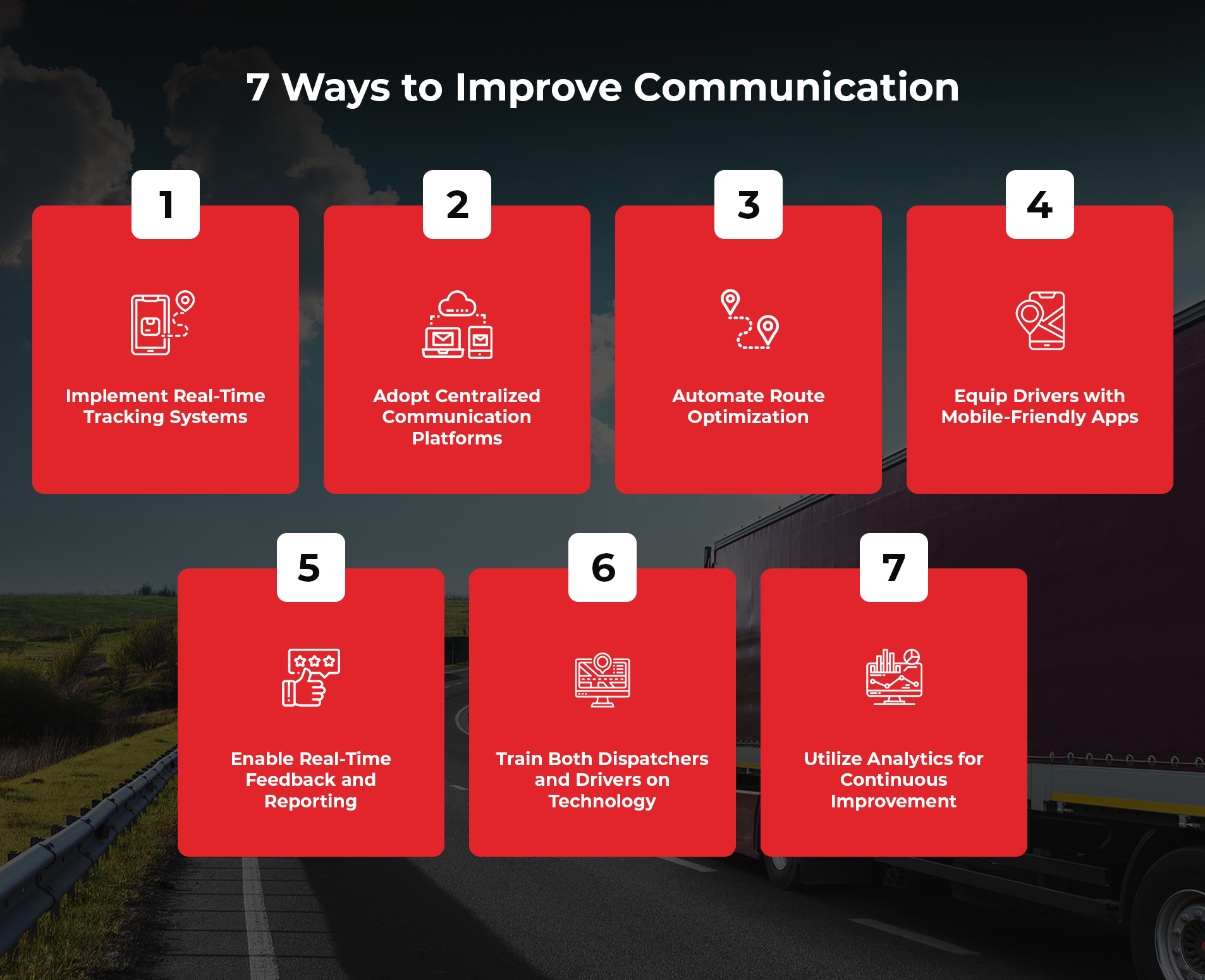
7 Ways to Improve Communication Between Dispatchers and Drivers
In the fast-paced logistics industry, seamless communication between dispatchers and drivers is critical to ensuring timely deliveries, customer satisfaction, and operational efficiency. Miscommunication, however, can result in delays, increased costs, and dissatisfied clients. Addressing these challenges requires not just process improvements but also the integration of robust tools such as logistics software.
Effective communication minimizes errors, ensures on-time deliveries, and improves fleet management. According to McKinsey, companies that integrate advanced communication technologies report a 15% improvement in operational efficiency. In this blog, we explore seven actionable strategies to enhance communication while highlighting the vital role of the best logistics software in driving success.
The Importance of Logistics Software in Communication
The logistics sector is growing rapidly, with the global market expected to exceed $15 trillion by 2027. In such a competitive landscape, businesses cannot afford inefficiencies. This is where logistics software to improve communication becomes indispensable.
From reducing manual errors to enabling real-time updates, the best logistics solution fosters a collaborative environment where dispatchers and drivers can work seamlessly. Additionally, it provides tools for predictive analysis, enhancing operational planning and reducing delays. This can help in reducing downtime, enhancing customer satisfaction and improving cost efficiency.
7 Ways to Improve Communication

1. Implement Real-Time Tracking Systems:
Real-time tracking bridges the gap between dispatchers and drivers, offering visibility and transparency. Dispatchers can monitor vehicle locations and provide real-time updates, while drivers benefit from receiving precise route guidance and timely information.
Modern logistics software a GPS-enabled solutions that update locations dynamically. This reduces the need for constant check-ins and empowers dispatchers to make informed decisions during unexpected events like traffic jams or road closures. A report by Allied Market Research indicates that global GPS tracking device market will reach $4.93 billion by 2030, driven by demand for real-time fleet monitoring.
2. Adopt Centralized Communication Platforms:
Disjointed communication methods, such as separate phone calls or manual record-keeping, can cause confusion and inefficiency. Adopting centralized communication platforms ensures that all updates, schedules and messages are stored and accessible in one place.
The best logistics solution often integrates messaging apps, automated notifications and delivery updates into a single interface. This reduces errors, fosters clarity and improves team coordination. Over 80% of logistics companies using centralized communication tools report a noticeable reduction in errors and miscommunication.
3. Automate Route Optimization:
Inefficient route planning can lead to late deliveries and unnecessary fuel consumption. Automating this process through logistics software eliminates guess work and ensures that drivers receive the most efficient routes.
Using advanced algorithms, these systems considers factor like traffic, weather conditions and delivery deadlines, saving time and resources. This minimizes the back-and-forth communication between dispatchers and drivers regarding route adjustments. Studies show that companies using automated route optimization see a 20-30% reduction in delivery times.
4. Equip Drivers with Mobile-Friendly Apps:
Since drivers spend most of their time on the road, mobile-friendly apps are essential tools for improving communication. The best logistics software offers user-friendly apps that allow drivers to access schedules, receive updates, and report issues directly.
These apps also reduce the reliance on manual communication, ensuring that dispatchers can send alerts or instructions instantly. According to Gartner, businesses with mobile logistics solutions experience a 25% improvement in delivery accuracy.
5. Enable Real-Time Feedback and Reporting:
Open communication channels for feedback and real-time reporting build trust and efficiency. Drivers should be encouraged to report delays, vehicle malfunctions, or other challenges as they arise. Dispatchers, in turn, should send updates or changes instantly to keep drivers informed.
With logistics software, feedback loops become streamlined trough automated reporting and notification features. This reduces the lag in communication and helps resolve issues faster. Businesses using real-time feedback tools report up to a 15% increase in fleet reliability.
6. Train Both Dispatchers and Drivers on Technology:
Even the best logistics software won’t yield results without proper training. Both dispatchers and drivers must be adept at using the tools provided. Training sessions focused on mobile apps, real-time tracking systems, and centralized communication platforms can significantly improve collaboration.
By reducing the technology learning curve, businesses can ensure that both teams operate efficiently and minimize errors caused by unfamiliarity. Research indicates that companies investing in employee training see a 40% improvement in operational efficiency.
7. Utilize Analytics for Continuous Improvement:
Analytics is key to identifying bottlenecks and improving processes. Dispatchers can analyze communication patterns, delivery times, and driver performance metrics using data generated by logistics software.
Drivers also benefit from insights into their performance, such as adherence to schedules and fuel efficiency. This fosters a culture of continuous improvement, where teams use data to refine their processes. A Deloitte study found that businesses leveraging analytics experience a 30% boost in decision-making efficiency.
Conclusion
The logistics industry thrives on precision and efficiency, both of which hinge on effective communication. By adopting these seven strategies and leveraging the power of logistics software, businesses can significantly enhance dispatcher-driver collaboration.
Investing in the best logistics solution is not just about keeping up with industry standards—it’s about staying ahead. With features like real-time tracking, centralized communication, and data analytics, logistics software ensures seamless operations and sets the foundation for long-term success.
Now is the time to rethink your communication strategies and embrace technology as a solution to enhance productivity and customer satisfaction. Improve your communication strategies with the help of LogiNext’s advanced software. Click on the red button below and book a demo with us today.
63







@LogiNext